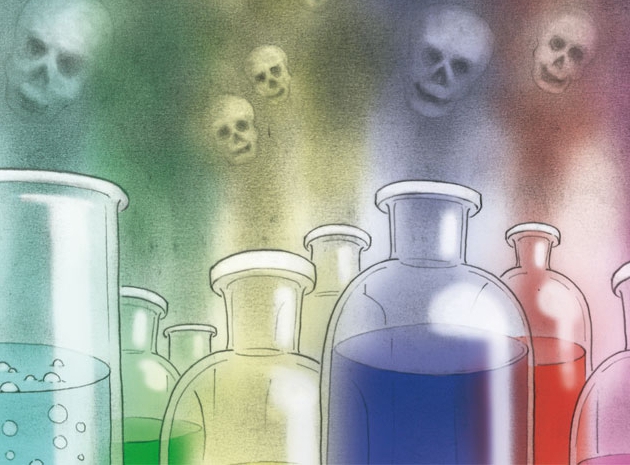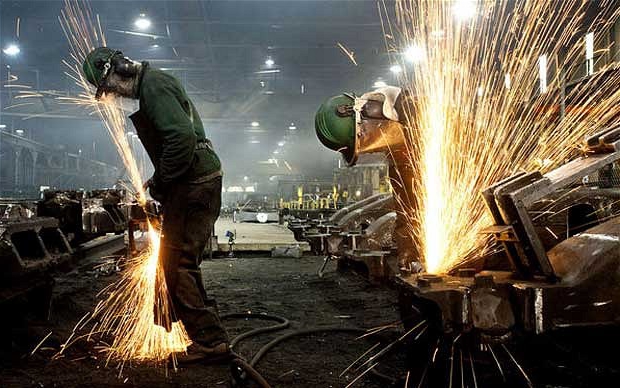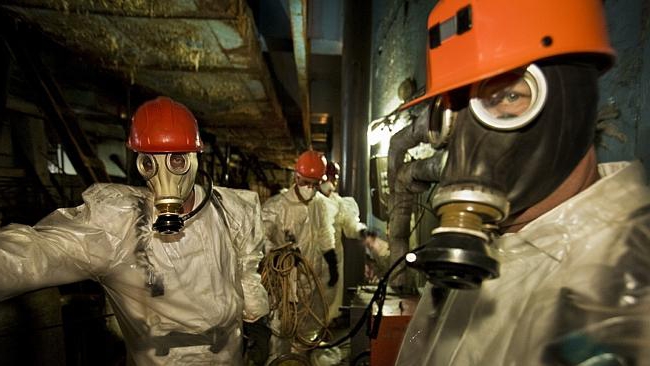Various factors constantly influence human health. They can lie in wait for us not only at the workplace, but also at home, on the street. A person spends most of the day at work, so the creation of a favorable and safe atmosphere plays an important role for good working capacity and health.
There are many enterprises where production is associated with a risk to human health. Harmful and dangerous factors that constantly surround employees can significantly reduce working capacity and have a negative impact on health.
Varieties of harmful factors
By harmful production factors we mean factors of the working environment that can contribute to the development of pathologies, decrease in working capacity, and increase the frequency of infectious diseases.
If harmful factors have too long an effect on a person, then they can already become dangerous. That is, lead to a sharp and sudden violation of health.
Harmful and dangerous factors can be of natural, or natural, and anthropogenic origin, that is, those arising from a person’s fault.
If we consider the nature of human exposure, then production factors can be divided into the following groups:
- Physical.
- Chemical.
- Biological.
- Psychophysiological.

Each of the groups may also have a natural or anthropogenic origin.
Physical hazardous and harmful production factors
Natural or natural factors include:
- Air temperature.
- Humidity.
- Air masses.
- Atmosphere pressure.
- Solar radiation.
Man-made harmful factors include:
- Increased dust in the workplace.
- Strong vibration.
- Noise level.
- Exposure to ultrasound or static electricity.
- The influence of electromagnetic fields.
- Laser radiation.
- Exposure to electric current.
- Work at high altitude.
- High or low temperature equipment.
- Moving and working mechanisms and equipment.
- Weapons of mass destruction.
- Workplace lighting.

As you can see, the list of harmful factors is quite large. All of them can have a negative impact on human health, especially with constant and prolonged exposure.
Chemical factors of the working environment
If we talk about natural substances, these are those that can easily enter the body with air, food or drink. These include: amino acids, proteins, fats, carbohydrates, vitamins, trace elements and other substances.
Factors of anthropogenic origin from the chemical group include:
- Increased gas contamination in the workplace.
- Exposure to toxic substances in humans.
- Contact with benzene and toluene vapors.
- Oxides of sulfur and nitrogen.
- Aggressive liquids, such as alkalis or acids.
Chemical harmful factors can be divided into groups depending on the nature of the effect on the human body:
- General toxic, cause poisoning of the body. For example, carbon monoxide, mercury, lead.
- Annoying. Act on the organs of the respiratory system, provoke coughing, sneezing. These include chlorine, ammonia.
- Sensitizing. They can cause allergic reactions. Most often, these are formaldehydes, varnishes based on nitro compounds.
- Carcinogenic. They provoke the development of tumors. These include: nickel, chromium compounds, amines, asbestos.
- Mutagenic.They increase the risk of mutations, especially in germ cells, which will certainly affect the offspring. Provocateurs can be mercury, styrene, magnesium.
According to the degree of danger, harmful production factors can be divided into several classes:
- Extremely dangerous.
- Highly hazardous substances.
- Moderately dangerous.
- Low hazard.

Usually the source of contamination of industrial premises with hazardous chemicals is raw materials for processing, component parts for equipment or the finished product itself.
Penetration paths harmful substances into the human body
Most often, dangerous and harmful production factors affect the body through the respiratory system. This is most dangerous because in the lungs there is a large absorbing surface of the alveoli. They are washed with blood, which means that hazardous substances quickly enter all vital organs.
The second route of entry of harmful substances is through the gastrointestinal tract, but this happens much less frequently. This is possible only if the rules of personal hygiene and labor safety at the workplace are not observed. In this case, all toxic substances enter the liver and are partially neutralized there.
Through the skin, substances that dissolve well in fats and proteins can enter the body. Severe cases of poisoning are usually caused by highly toxic substances. These include: tetraethyl lead, methyl alcohol, etc.
In the body, hazardous substances are not distributed evenly, but accumulate in certain places. For example, copper most often accumulates in the skeletal system, manganese in the liver, and mercury in the kidneys and intestines.
Biological Hazards
The following harmful environmental factors belong to this group:
- Pathogenic microorganisms and their metabolic products.
- Microorganisms producing.
- Protein preparations.
Hospital workers, travel enthusiasts and people working for a long time in the open air are most at risk of contracting various diseases. Upon contact with plants or animals, an allergic reaction of the body, infection with helminths may occur.
Exposure to mold, fungi, grain dust can cause various infectious diseases, skin diseases. Dermatitis is a common diagnosis on sick leave in people working with harmful substances.
There is even some pattern in the spread of diseases associated with professional activities. Tuberculosis and hepatitis are most often infected by medical personnel, fungal infections are characteristic of granary workers, and in lung industry workers, chronic lung disease is a professional. Workers in the livestock industry are susceptible to bacterial infections.

Psychophysiological factors
Harmful factors of the psychophysiological group can be divided into two categories:
- Physical overload.
- Neuropsychic overload.
Physical, in turn, are static and dynamic. Together, they characterize the severity of the worker's labor. This refers to the load on the musculoskeletal system, the cardiovascular system.
The severity of labor can be characterized by the magnitude of the load that the worker is forced to lift or move, the number of movements necessary for the implementation of production processes.

Neuropsychiatric overload can characterize the intensity of work. The classification of harmful and dangerous factors in this category may include the following varieties:
- Mental overstrain.
- Emotional stress.
- Monotony of work.
- The mode of work and rest.
- Overstrain of the senses.
It should be noted that the same harmful production factors can simultaneously belong to several categories.
Classes working conditions by hazard
Any production must have its own standards, according to which the production process is carried out. First of all, these are hygienic standards that make the work of workers safe for their health.
Working conditions can be qualified taking into account existing deviations from established standards. Based on all the criteria, working conditions can be divided into several classes:
- Grade 1 - these are the most optimal conditions under which everything is done so that health is maintained, and performance is improved.
- Grade 2 - permissible working conditions. In general, they comply with accepted standards, and some deviations are easily eliminated during rest.
- Grade 3 - harmful conditions. Workers are constantly exposed to harmful factors, the indicators of which exceed all permissible standards. As a result, serious harm is inflicted on the health of employees.
Harmful working conditions, in turn, are divided into several degrees:
- 1 degree. Working conditions cause reversible changes in the health of workers, but increase the risk of developing diseases.
- 2 degree. Exposure to harmful factors causes a permanent violation in the body. There may be a temporary loss of performance, the initial signs of occupational diseases.
- 3 degree. There is a sharp increase in professional pathologies in a mild form.
- 4 degree. Severe forms of occupational diseases.

One can distinguish another class of working conditions - hazardous or extreme. Factors of this group can cause danger to human life and manifestations of acute occupational lesions.
Maximum permissible concentrations of harmful substances
No matter how harmful the production, the maximum permissible concentrations of hazardous substances must be observed.
MPC (maximum permissible concentration) is a concentration of substances in the workplace that, with daily exposure, does not cause illness or a deviation in health.
MPC of harmful substances is often used in the following cases:
- When drafting production workshops, processes, equipment, ventilation systems.
- During quality control of working conditions of workers in the workplace.
For all harmful substances, their maximum permissible concentrations are established, it depends on their effect on the human body. The most dangerous are lead, beryllium, manganese.
Highly hazardous substances are chlorine, hydrogen fluoride, phosgene. Moderate danger is tobacco, methyl alcohol. But ammonia, gasoline, acetone, ethyl alcohol are low-hazard substances.
Ways to protect workers from harmful production factors
All remedies can be divided into:
- Collective
- Customized.
Collective means involve the simultaneous protection of a large number of workers. They are divided into several classes:
- To normalize the air. These include ventilation systems, air conditioners.
- To bring lighting standards to the workplace: various lighting fixtures, lamps that can provide good lighting.
- To protect against harmful and dangerous factors.
If the enterprise has a high level of noise, then the walls are covered with materials that absorb sound, special covers are put on working mechanisms, and earplugs are given to workers.
To prevent injuries on the equipment, all hazardous areas are protected from all sides. Locking buttons are installed on the doors, dampers, which will not allow opening it until the mechanism completely stops its work.
Workers dealing with electricity are required to be provided with rubber gloves, boots or galoshes. The equipment is equipped with warning lights, safety signs.
If the work is carried out at a height, then this place should be fenced.
If collective methods are not able to provide quality protection, then each worker in hazardous production is given individual means. These include robes, gloves, respirators, headbands, protective suits, etc.

Only safe work can be of high quality and productive.
Elimination of dangerous and harmful factors
At many enterprises, the production cycle is inextricably linked to the effects of harmful substances on humans. Administration and management should make every effort to try to completely eliminate this effect or reduce its impact.
If you think carefully about some processes, it turns out that sometimes toxic substances can be replaced with safer ones. Many leaders do not go for it out of mercantile considerations. Thus, they save on the health of their subordinates. If replacement is not possible, then everything must be done so that the worker is exposed to harmful and dangerous factors as little as possible. For this, the company at its own expense is obliged to provide personnel with all possible means of protection.
In order to prevent adverse effects, the following measures should be applied:
- Local air purification.
- Air stuffing.
- Wearing workwear.
- Equipped facilities for recreation.
- Exact observance of working hours.
- A break is provided at regular intervals.
- Workers are granted longer paid leave.
If all measures are taken in a timely manner and are used comprehensively, then it can be argued that management is trying to provide its staff with safe working conditions.
The most dangerous industries
The classification of harmful factors suggests that not all enterprises and production can be considered hazardous to human health. The most dangerous types of work are:
- Installation and dismantling of heavy equipment.
- Transportation of cylinders with gas, acids, alkalis.
- Work at high altitude.
- Earthwork at the locations of electric cables.
- Work in mines, bunkers, wells, furnaces.
- Repair and cleaning of boilers, cyclones and other boiler equipment.
- Work in the chemical industry.
You can still list the most dangerous professions and production, but mankind can’t do without them, so it’s still necessary to work here, despite the presence of health risks.








